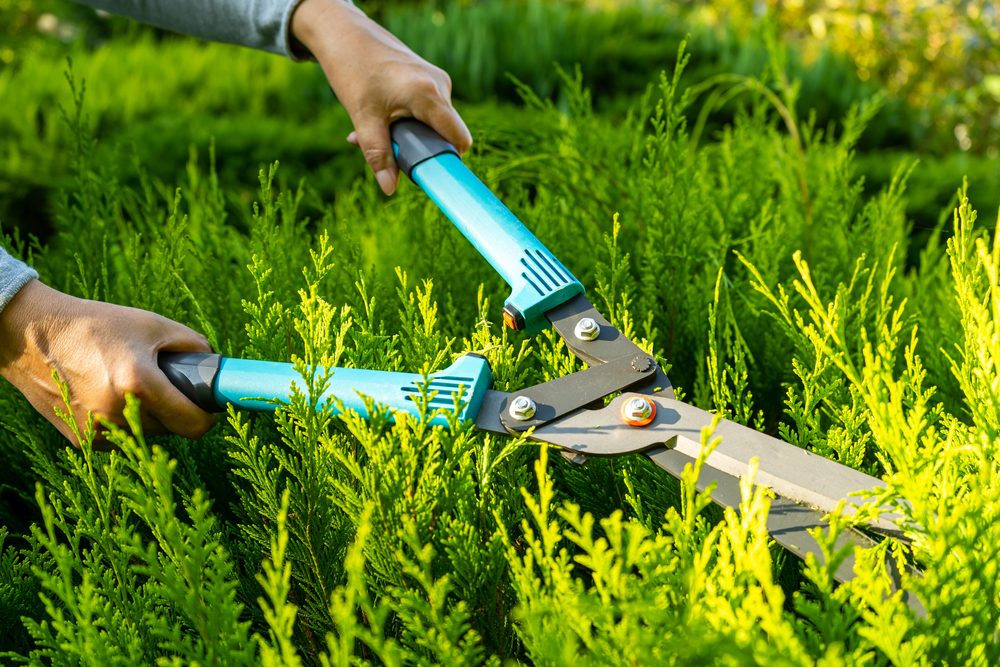The thuja rose to fame in the gardens of the 1980s, alongside coppiced birches and clusters of red roses. Even today, it remains a popular choice for elegantly demarcating a property.
Do you appreciate its rapid growth, its beautiful green color year-round, and its ability to quickly create a true screen against prying eyes? However, be prepared for regular pruning to prevent it from spreading too much and becoming invasive.
When to trim your thuja?
The thuja has its requirements, just like you! The ideal times for trimming a thuja hedge are generally in May and between August 15 and September 15. These periods ensure a good resumption of growth and proper healing after pruning.
If necessary, you can certainly perform additional interventions throughout the year. However, always avoid frost periods. Finally, choose your timing wisely: opt for a cloudy day or late afternoon to minimize stress on your trees exposed to heat and sunlight.
At what age to start trimming your hedge?
You may be wondering when to prune your young plants. Well, don’t wait too long! From their installation, thujas should be regularly trimmed.
The earlier you start, the denser the hedge will be in its core, making future maintenance easier. This way, you’ll achieve a hedge about forty centimeters thick that will withstand the test of time.
What is the ideal tool for trimming thujas?
The thuja is particularly easy to maintain thanks to its fine branches. You can use a simple manual shear or a powered device such as an electric or gas hedge trimmer.
For quick, precise, and uniform work, a motorized hedge trimmer with a long blade will be your best ally. And for high or hard-to-reach spots? Consider a pole hedge trimmer, which allows you to keep your feet safely on the ground and avoid risks associated with working at height.
Safety tip: For added stability and comfort, set up a small garden scaffold on wheels. Mobile and adjustable, it will allow for safe and effective work without the risk of falling.
Trimming your thujas at an angle: good or bad idea?
Are you used to trimming your hedge in a perfectly straight, vertical line? Here’s a tip: instead, opt for a angled trim, with a base slightly wider than the top.
This technique will provide your hedge with more light and water at the bottom, ensuring strong branches and dense foliage even at the base of your trees.
Practical advice: remember to water your hedge generously in the days leading up to the trim. This precaution will promote better healing of the cuts and encourage the rapid appearance of new shoots.
What to do with cutting waste?
When trimming thujas, the waste can accumulate quickly. But don’t worry, you have several very simple and eco-friendly options to utilize them:
- Spread them directly at the base of the hedge: as they decompose, they will serve as effective mulch to maintain soil moisture.
- Add them to the compost: they will become an excellent amendment to enrich your garden.
Keep in mind: if your thuja hedge is within two meters of the fence, the law requires that you do not exceed two meters in height. This legal obligation is ideal for simplifying your work, as it makes trimming more accessible.
And at your home, how do you maintain your thuja hedge? Do you prefer manual shears or an electric hedge trimmer? Share your tips and experiences in the comments! We would love to hear about your favorite techniques.

